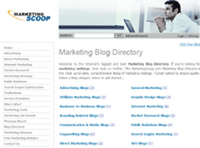1. Do Have a Clear Strategy? Define your goals in writing. Do you want to:
- Reinforce your brand
- Cross-sell or up-sell your current customers
- Educate and inform your customers
- Develop customer loyalty
- Convert confirmed "opt-in" prospects to customers
Once you decide what you want to accomplish, you can then assess whether you need to develop multiple e-mail campaigns or if a single integrated campaign is your best course of action. The highest response rates are often realized when an email campaign is combined with a direct mail campaign into one overall strategic marketing effort. Repetition is an effective tool in e-mail marketing just as it is in direct mail and space advertising. A follow up email message sent to non-respondents can provide a significant boost to a campaign's performance. E-mail surveys to customers about their usage of your products or as a way to solicit opinions on a wide variety of topics produce virtually instant results in a highly cost-effective manner.
2. How Will I Track Results?
3. Have I Created a Relevant Message?
Become knowledgeable about the information retained in your database and consider how you can utilize it to the fullest. The more detailed the information, the more personalized and better targeted your e-mail campaigns can be. Mining your database to understand and categorize your customers will help you send only relevant messages to both them and confirmed opt-in prospects that mirror your customers. It will help you to build one-on-one customer relationships for years to come. If you plan to collect personal data on individuals, you need to have a privacy policy posted on your Web site that explains how the collected data will be used. Review your policy periodically and follow the golden rule: "Say what you do, and do what you say."
4. Do I Have a Valuable Message?
Your marketing objectives and target audience should drive message content for an e-mail campaign. You also need to create a sense of value within the communication so that you grab the attention of your audience. Extend offers online that your customers can't receive anywhere else—whether it's information or special incentives, such as reduced pricing or free shipping. Resist the urge to make every message a hard-core sales pitch. Mix revenue-generating offers with relevant information, helpful advice, and requests for feedback. The most popular message content is a product offer with a discount (41%), closely followed by a product offer with no discount (32%). The third most popular was some type of market research survey (16%). E-mail can be a powerful relationship-building medium. Keep market characteristics in mind as well. Sending a message to educators at school during the summer months is risky at best.
5. Am I Following E-Mail Best Practices?
To answer this question, you actually need to ask yourself these questions:
a. Am I sending e-mails only to my customers or to those who have expressly agreed (i.e.,
opt-in) to receive e-mail messages.
b. Have I obtained opt-in permission from all non-customers on my in-house list prior to
sending them e-mail?
d. Am I processing all opt-outs, including those that hit reply, quickly
e. Is my server equipped to handle opt-outs immediately?
If you did not answer "yes" to each question above, you may be, unknowingly or not, sending spam (unwanted, unasked-for e-mails) and need to seriously rethink the implementation of your e-mail campaigns. It is estimated that spam currently accounts for about 50% of all e-mails sent. Spam is indeed a critical issue, with many states already enacting laws to punish offenders.

